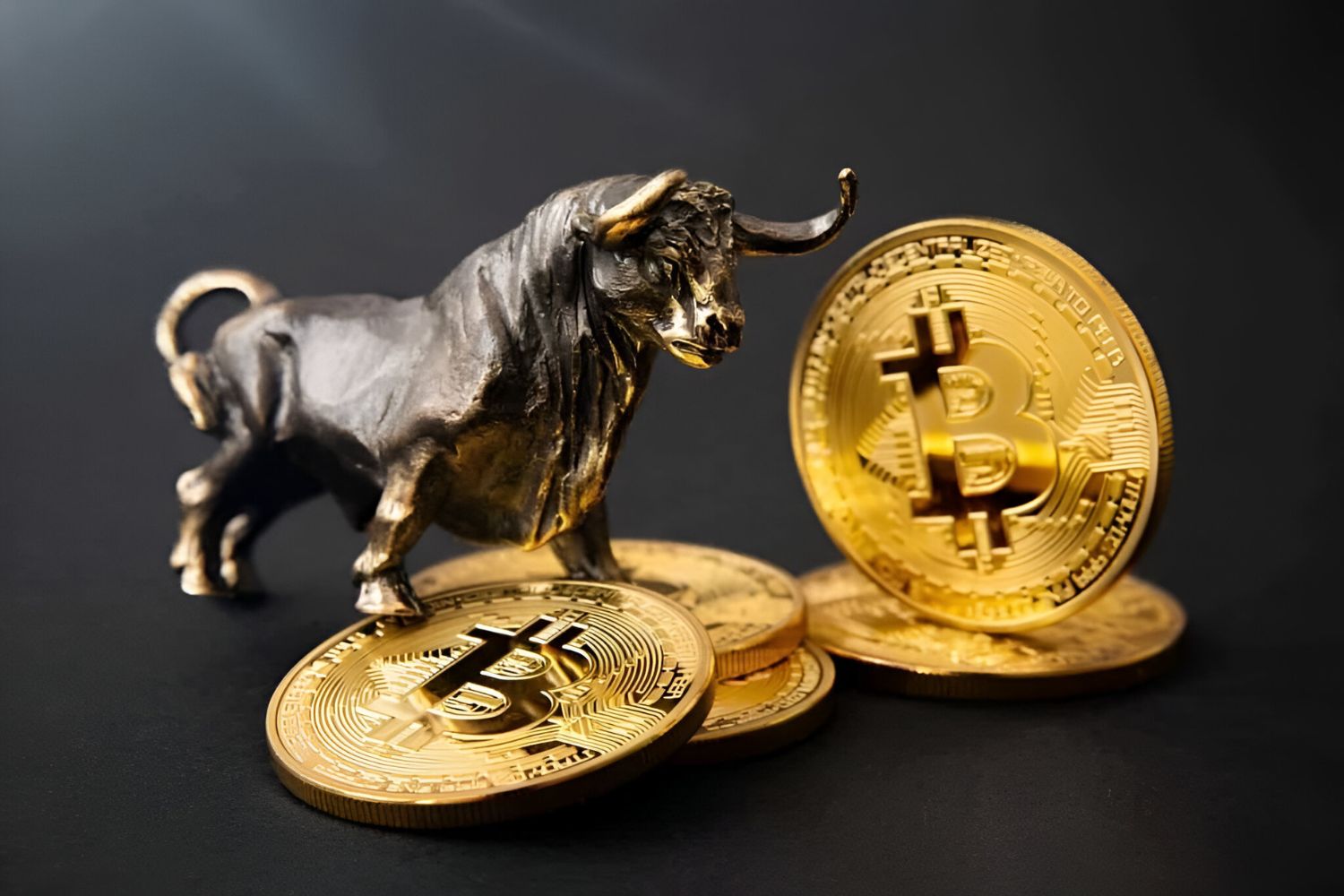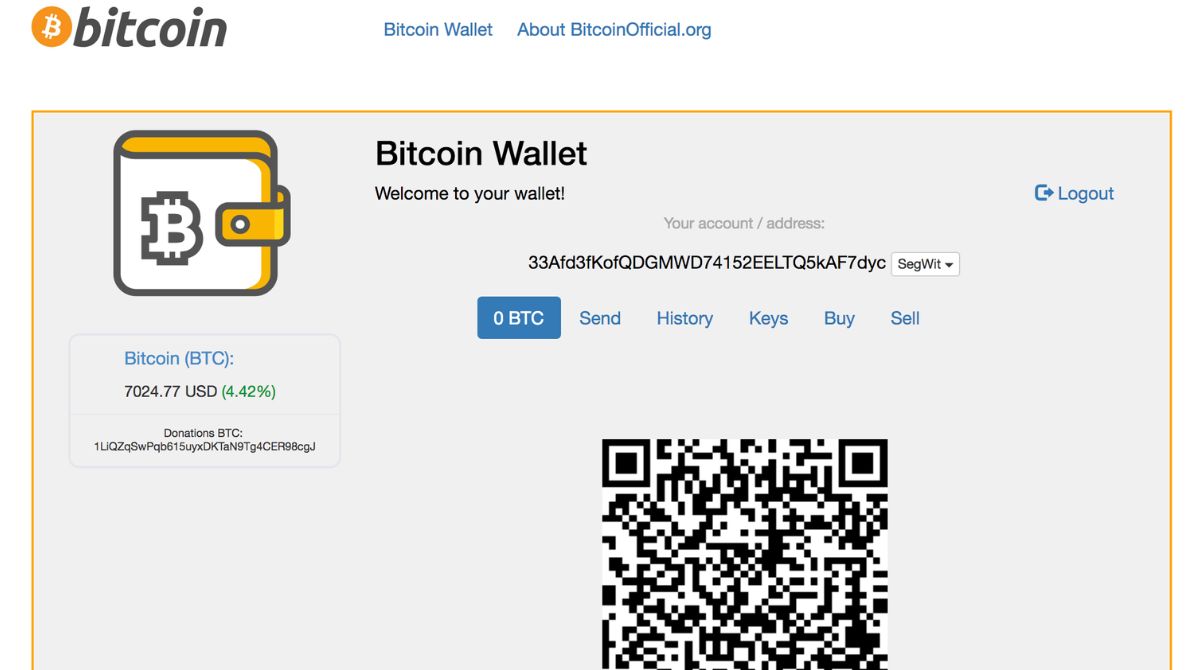Introduction
Bitcoin, the world’s first decentralized cryptocurrency, has experienced a remarkable surge in value over the years. Its meteoric rise has left many questioning why this digital asset has seen such exponential growth. Exploration of the factors behind Bitcoin’s ascent reveals a complex interplay of various elements, ranging from its limited supply and increasing adoption to institutional investments and global uncertainties.
Originally introduced in 2009 by an anonymous individual or group using the pseudonym Satoshi Nakamoto, Bitcoin operates on a peer-to-peer network, allowing for secure, transparent, and borderless transactions. It differs from traditional currencies, as it is not regulated by any central authority or government. Bitcoin’s underlying technology, known as blockchain, ensures the immutability and integrity of transactions, representing a significant breakthrough in the world of finance.
This article aims to delve into the key reasons behind the rise of Bitcoin, shedding light on the various factors that have propelled it to new heights. Understanding these factors is essential for anyone seeking to comprehend the dynamics and potential future of this digital asset.
The History of Bitcoin
Bitcoin has come a long way since its inception in 2009. Its journey began with the publication of a whitepaper titled “Bitcoin: A Peer-to-Peer Electronic Cash System” by Satoshi Nakamoto, introducing the concept of a decentralized digital currency. The origins of Bitcoin can be traced back to the desire for a monetary system that operates independently of traditional financial institutions.
In its early days, Bitcoin garnered attention primarily from tech enthusiasts and cryptography enthusiasts. Its value was relatively minimal, with very few avenues for its use as a medium of exchange. However, over time, as more people recognized its potential, the demand for Bitcoin began to increase, driving its value upwards.
The first notable milestone in Bitcoin’s history was the establishment of the first Bitcoin exchange, BitcoinMarket.com, in March 2010. This platform provided users with the ability to trade Bitcoin for traditional currencies, facilitating its broader adoption. As more exchanges emerged, Bitcoin became more accessible to the general public, leading to a surge in its popularity.
The year 2013 witnessed a significant milestone for Bitcoin, as its value skyrocketed to over $1,000 per Bitcoin. This surge was primarily fueled by increased media attention and growing recognition from investors. However, Bitcoin also experienced a significant setback later that year when the largest Bitcoin exchange at the time, Mt. Gox, declared bankruptcy due to a massive hacking incident. This event highlighted the need for stronger security measures within the cryptocurrency ecosystem.
Despite this setback, Bitcoin continued to gain traction. Major companies started accepting Bitcoin as a form of payment, further legitimizing its use. The year 2017 marked another major milestone for Bitcoin, as its value reached an all-time high of nearly $20,000. The media frenzy surrounding this surge in value attracted more attention to the cryptocurrency space, drawing in new investors and fuelling further growth in the market.
Since then, Bitcoin has experienced both ups and downs in its value, with significant fluctuations. However, its overall trajectory has shown an upward trend, with increasing recognition and adoption across various industries.
Understanding the history of Bitcoin is crucial in comprehending its current state and potential future. It has come a long way from its humble beginnings, and its journey continues to unfold as it strives to establish itself as a mainstream currency.
Bitcoin’s Limited Supply
One of the key factors contributing to Bitcoin’s rise is its limited supply. Unlike traditional currencies, which can be printed by central banks, Bitcoin has a fixed supply cap. According to its protocol, only 21 million Bitcoins will ever exist.
This scarcity creates an intrinsic value proposition for Bitcoin. As the supply is limited, the demand for Bitcoin increases, leading to an increase in its price. This fundamental economic principle of supply and demand plays a significant role in driving the value of Bitcoin.
The controlled issuance of new Bitcoins is an essential aspect of the cryptocurrency’s design. Through a process called mining, new Bitcoins are created and added to the circulation. However, the rate at which new Bitcoins are produced decreases over time. This diminishing supply adds to the intrigue and scarcity of Bitcoin as an asset.
Bitcoin’s limited supply also makes it an attractive investment option for individuals seeking to hedge against inflation. Traditional currencies are subject to inflationary pressures due to the actions of central banks, which can increase the money supply. However, with a fixed supply, Bitcoin provides a hedge against inflationary risks, making it an appealing store of value.
Investors and institutions recognize the potential of Bitcoin as a deflationary asset. The concept of scarcity and the inability to manipulate the supply make it an attractive alternative to traditional fiat currencies. This recognition has led to increased demand, driving up the price of Bitcoin.
Another aspect that contributes to Bitcoin’s limited supply is the phenomenon known as “Halving.” Every four years, the number of new Bitcoins generated through mining is halved as part of the protocol. This event has historically been associated with significant price increases. The reduced supply coupled with growing demand intensifies competition among miners and further enhances Bitcoin’s scarcity.
Bitcoin’s limited supply is a significant factor in its rise. The controlled issuance, scarcity, and deflationary nature of Bitcoin create a strong foundation for its value. As more individuals and institutions recognize these attributes, the demand for Bitcoin continues to grow, driving its price higher.
Increasing Adoption and Use Cases
One of the key drivers behind Bitcoin’s rise is its increasing adoption and the growing number of real-world use cases. Over the years, more individuals, businesses, and institutions have begun to recognize the potential of Bitcoin as a viable form of currency and store of value.
Bitcoin’s adoption as a payment method has seen significant growth. Numerous online and offline merchants now accept Bitcoin as a form of payment, providing consumers with more options for using their Bitcoins to purchase goods and services. This increased acceptance has contributed to the mainstream recognition and legitimacy of Bitcoin as a transactional medium.
Additionally, Bitcoin has gained traction in cross-border transactions. Its decentralized nature and borderless functionality make it an appealing alternative to traditional remittance methods. People in countries with limited access to banking services or facing high remittance fees can leverage Bitcoin to send and receive funds quickly and affordably, bypassing intermediaries.
Besides its utility as a payment method, Bitcoin has also gained popularity as a speculative investment and store of value. Its decentralized nature and limited supply have positioned it as a potential hedge against economic uncertainties and inflation. More individuals and institutions are considering Bitcoin as a long-term investment and an alternative asset class to diversify their portfolios.
The increasing adoption and use cases of Bitcoin are also evident in the rise of decentralized finance (DeFi) applications. DeFi refers to financial applications built on blockchain technology, which aim to provide traditional financial services without intermediaries. Bitcoin’s presence within the DeFi ecosystem has expanded, with platforms offering lending, borrowing, and trading services using Bitcoin as collateral.
Furthermore, Bitcoin has gained trust and recognition from institutional investors, further propelling its adoption. Prominent companies and investment firms have started to allocate significant resources and funds to Bitcoin. Publicly traded companies, such as Tesla and MicroStrategy, have made substantial investments in Bitcoin, signaling their confidence in its potential value.
Bitcoin’s increasing adoption and diverse range of use cases contribute to its ongoing rise. As more individuals, businesses, and institutions recognize its potential and embrace its functionalities, the demand for Bitcoin is expected to continue growing, further driving its value.
Institutional Investments in Bitcoin
In recent years, there has been a significant influx of institutional investments in Bitcoin. Traditional financial institutions and major corporations have started recognizing the potential of Bitcoin as a valuable asset class and a store of value.
One of the key catalysts for institutional interest in Bitcoin is the growing acceptance and regulatory clarity surrounding cryptocurrencies. As regulatory frameworks have evolved to accommodate digital assets, institutional investors have gained more confidence in entering the cryptocurrency market. This has opened the doors for large investment firms, hedge funds, and pension funds to allocate a portion of their portfolios to Bitcoin.
The entry of institutional investors brings substantial liquidity to the market, helping to stabilize and increase the value of Bitcoin. Their involvement also adds a layer of credibility and legitimacy to the cryptocurrency space, attracting more institutional players and encouraging further adoption.
The unprecedented economic challenges posed by the COVID-19 pandemic have further fueled institutional investment in Bitcoin. With central banks implementing expansive monetary policies and low-interest rates, institutional investors have sought alternative assets to protect against potential inflation and diversify their portfolios. Bitcoin’s limited supply and potential as a store of value have made it an attractive option for institutional investors seeking to hedge against economic uncertainty.
Notable examples of institutional investment in Bitcoin include companies like MicroStrategy, which converted a significant portion of their cash reserves into Bitcoin, and Tesla, which invested $1.5 billion in Bitcoin as part of its treasury management strategy. These high-profile investments by well-known companies have garnered attention and generated further interest in Bitcoin from other institutional players.
Moreover, the establishment of cryptocurrency-focused investment funds and Bitcoin custodial services have made it easier for institutions to enter the market. These dedicated service providers offer security, custody, and regulatory compliance solutions that cater specifically to the needs of institutional investors.
The participation of institutional investors in the Bitcoin market is expected to bring greater stability and maturity to the industry. Their long-term investment strategies and larger capital allocations have the potential to reduce volatility and increase investor confidence. This trend is likely to continue as more institutional players recognize the benefits and potential returns associated with Bitcoin.
In summary, the rise of institutional investments in Bitcoin reflects growing recognition of its value and potential as a long-term investment. The confidence and involvement of institutional players bring liquidity, stability, and legitimacy to the cryptocurrency market, further propelling the rise of Bitcoin.
Political and Economic Uncertainty
Bitcoin has witnessed a surge in value amid times of political and economic uncertainty. The decentralized and global nature of Bitcoin has made it an attractive investment option for individuals seeking refuge from unstable traditional markets.
Political instability, such as government corruption, economic sanctions, or political crises, can lead to a loss of trust in the traditional financial system. In such circumstances, individuals may turn to Bitcoin as a means of preserving their wealth outside of the reach of government control and interference.
A prime example of this can be seen in countries with hyperinflation, such as Venezuela and Zimbabwe. In these nations, where people have experienced significant economic turmoil, citizens have increasingly turned to Bitcoin as a store of value and a means of conducting transactions. Bitcoin provides an alternative to the volatile local currency, offering stability and security during times of economic uncertainty.
Similarly, in regions facing strict capital controls and restrictions, Bitcoin acts as a means of circumventing these limitations. People can move funds across borders without the need for intermediaries or government oversight, preserving their financial freedom.
Additionally, global economic uncertainties, such as recessions or geopolitical tensions, can impact traditional investment vehicles. During times of economic downturn, investors may seek alternative assets that are not correlated with traditional markets. Bitcoin, with its unique properties and limited supply, has emerged as a potential hedge against economic uncertainty.
Bitcoin’s decentralized nature also makes it resistant to government or central bank interventions. This feature is particularly appealing to those who are skeptical of centralized financial systems, as well as individuals seeking protection from government monetary policies that may devalue fiat currencies.
Moreover, the COVID-19 pandemic has further highlighted the importance of Bitcoin as a hedge against economic uncertainty. Governments worldwide have implemented massive fiscal stimulus measures and quantitative easing to combat the economic impact of the pandemic. These interventions have raised concerns about potential inflation and debasement of traditional currencies. Investors looking for alternative stores of value have turned to Bitcoin as a hedge against potential devaluation and a means to preserve purchasing power.
Political and economic uncertainties continue to drive the adoption and value of Bitcoin. As individuals seek stability, security, and financial autonomy, Bitcoin serves as a decentralized and borderless asset that offers refuge from traditional systems affected by geopolitical and economic turbulence.
The Impact of Covid-19
The global outbreak of the COVID-19 pandemic has had a significant impact on the rise of Bitcoin. The crisis has brought to light the vulnerabilities of traditional financial systems, while also highlighting the potential of digital currencies like Bitcoin.
The economic uncertainty caused by the pandemic, including lockdowns, business closures, and stock market volatility, has led many individuals and institutional investors to seek alternative investment options. Bitcoin, with its decentralized nature and limited supply, has emerged as a promising store of value during these turbulent times.
The unprecedented fiscal stimulus measures implemented by governments worldwide in response to the pandemic have raised concerns about potential inflation and currency devaluation. As a result, investors have turned to Bitcoin as a hedge against inflation, given its deflationary nature and its potential to hold its value amidst monetary expansion.
Moreover, the pandemic has accelerated the shift towards digital payments and increased the acceptance of cryptocurrencies. With the need for contactless transactions and the reliance on online businesses, Bitcoin has gained more recognition as a viable form of digital currency for both individuals and businesses.
The COVID-19 crisis has also highlighted the importance of financial inclusion, particularly in areas with limited access to traditional banking services. Bitcoin provides an alternative for unbanked populations, allowing them to participate in the global economy and access financial services without relying on traditional banking infrastructure.
Furthermore, the pandemic-related disruptions in global supply chains and remittance services have showcased Bitcoin’s potential for cross-border transactions. Bitcoin offers a fast and cost-effective means of sending and receiving funds globally, particularly in regions with limited access to traditional remittance services.
The impact of COVID-19 on the global economy has also exposed the vulnerabilities of centralized financial systems and prompted discussions about the need for decentralized alternatives. The decentralized nature of Bitcoin, empowered by its underlying blockchain technology, provides individuals with ownership and control over their funds, offering a sense of security and autonomy.
While the pandemic initially caused a drop in the value of Bitcoin, it quickly rebounded and reached new all-time highs. This resurgence can be attributed to the increasing recognition of Bitcoin’s qualities as a digital store of value and a hedge against economic uncertainties.
In summary, the COVID-19 pandemic has significantly influenced the rise of Bitcoin. The economic uncertainty, the shift towards digital transactions, and the desire for an alternative store of value have all contributed to Bitcoin’s increased adoption and recognition as a viable asset class amidst prevailing global uncertainties.
Media Attention and Publicity
Another significant factor contributing to the rise of Bitcoin is the extensive media attention and publicity it has received over the years. Bitcoin’s unique characteristics and its potential to disrupt traditional financial systems have made it a subject of intrigue and fascination for journalists, analysts, and the general public.
The media coverage surrounding Bitcoin has played a crucial role in raising awareness about the cryptocurrency. News outlets, both mainstream and niche, have dedicated considerable airtime and column inches to Bitcoin-related stories, interviews with industry experts, and analysis of its price movements. This extensive coverage has helped introduce Bitcoin to a broader audience and generate curiosity among potential investors.
Furthermore, notable events and milestones in Bitcoin’s history have attracted substantial media attention. For instance, when Bitcoin reached its all-time high price, media outlets reported extensively on the surge, sparking conversations and public interest. The media’s continued coverage of Bitcoin’s price fluctuations and market trends has created a sense of excitement and urgency, generating FOMO (fear of missing out) among individuals looking to invest.
Celebrities, prominent business figures, and influential individuals expressing their support or skepticism towards Bitcoin have also garnered significant media attention. Their endorsements or criticisms have the power to sway public perceptions and influence investment decisions. Furthermore, the involvement of celebrities in projects or ventures related to Bitcoin has brought further attention and publicity to the cryptocurrency.
Publicity surrounding high-profile Bitcoin investors, such as billionaires and institutional investors, has added credibility and legitimacy to the cryptocurrency. When well-known figures publicly announce their Bitcoin investments, it creates a media frenzy, fueling both curiosity and confidence in the digital asset.
Social media platforms have also played a substantial role in spreading awareness and generating interest in Bitcoin. Influencers, thought leaders, and everyday users discuss Bitcoin on platforms like Twitter and Reddit, sharing news, insights, and personal experiences. These online communities have contributed to the viral nature of Bitcoin-related discussions and fostered a sense of community and engagement.
However, it is important to note that media attention and publicity can also have a downside. The volatility of Bitcoin’s price can lead to sensationalistic reporting, creating unrealistic expectations and fueling speculative behavior. Misinformation or negative coverage can also cause temporary setbacks for Bitcoin and impact public sentiment.
Overall, media attention and publicity have played a pivotal role in propelling the rise of Bitcoin. The extensive coverage, celebrity endorsements, and social media discussions have introduced Bitcoin to a wider audience, piqued interest, and contributed to its growing recognition as a disruptive force in the financial world.
Speculation and FOMO
Speculation and the fear of missing out (FOMO) have been significant driving forces behind the rise of Bitcoin. Bitcoin’s volatile nature and the potential for significant price gains have attracted speculative interest from both individual investors and institutional players.
The possibility of substantial returns on investment has fueled speculation in the Bitcoin market. Its price history, marked by periods of rapid appreciation, has created a sense of excitement and urgency among investors looking to capitalize on potential gains. This speculative behavior has been further amplified by the fear of missing out on the opportunity to profit from Bitcoin’s ascent.
Social media, online forums, and investment communities play a crucial role in spreading FOMO around Bitcoin. Posts and discussions highlighting massive returns or success stories of early adopters can trigger a fear of missing out on similar gains. This FOMO-driven speculation leads to increased buying pressure, driving up the price of Bitcoin.
Moreover, the nature of Bitcoin as a digital asset with limited supply contributes to FOMO-driven speculation. As more people become aware of the finite supply of Bitcoin, the fear of scarcity intensifies, leading to a rush to acquire the cryptocurrency before its price rises further.
Celebrities and influencers endorsing Bitcoin or sharing their success stories can also ignite FOMO among their followers. Their endorsements, combined with the allure of potential profits, can create a sense of urgency to invest in Bitcoin before it becomes too expensive.
Speculative trading and short-term price fluctuations tend to attract attention from mainstream media, further fueling FOMO. News headlines reporting on significant price increases or stories of overnight Bitcoin millionaires can amplify public interest and stimulate further speculation.
However, it’s important to note that speculation and FOMO can also contribute to market volatility and short-term price bubbles. When driven solely by hype and speculation, the market becomes vulnerable to rapid price corrections and increased volatility.
While speculation and FOMO are influential factors behind Bitcoin’s rise, it’s crucial for investors to approach Bitcoin with caution. Responsible investing, based on thorough research and a long-term perspective, is essential to mitigate the risks associated with speculative behavior.
In summary, speculation and FOMO are significant contributors to the rise of Bitcoin. The allure of potential profits and the fear of missing out on an investment opportunity have attracted speculative interest from both individual and institutional investors, driving up the price of Bitcoin. However, it is important to approach Bitcoin investments with caution and to be mindful of the risks associated with speculative trading.
Conclusion
The rise of Bitcoin can be attributed to a combination of factors that have contributed to its growing popularity and value. Its limited supply, increasing adoption and use cases, institutional investments, political and economic uncertainty, media attention and publicity, as well as speculation and FOMO, all play significant roles in driving Bitcoin’s ascent.
The limited supply of Bitcoin, with its fixed cap of 21 million units, creates scarcity and intrinsic value for the cryptocurrency. This, coupled with increasing adoption as a payment method and store of value, has expanded its utility and legitimacy in the mainstream financial world.
Institutional investments in Bitcoin have provided a stamp of approval and brought greater liquidity and stability to the market. The participation of notable companies and investment firms has increased confidence in Bitcoin’s long-term potential.
Political and economic uncertainties, especially during times of crises, have driven individuals to seek alternatives outside of traditional financial systems. Bitcoin’s decentralized nature and borderless functionality have positioned it as a potential refuge and medium of exchange in a globally interconnected world.
The extensive media attention and publicity surrounding Bitcoin have played a vital role in raising awareness and generating interest. Media coverage, celebrity endorsements, and social media discussions have introduced Bitcoin to a broader audience and highlighted its disruptive potential.
Furthermore, speculation and the fear of missing out (FOMO) have fueled the rise of Bitcoin. The potential for significant returns and the allure of quick profits have attracted investors looking to capitalize on the cryptocurrency’s volatile price movements.
It is important for investors to approach Bitcoin with caution and conduct thorough research. While Bitcoin has shown tremendous growth, it remains a highly volatile and speculative asset class. Responsible investing and a long-term perspective are crucial in mitigating risks and maximizing the potential benefits.
In conclusion, the rise of Bitcoin can be attributed to a combination of factors, ranging from its limited supply and increasing adoption to institutional investments, political and economic uncertainties, media attention, and speculation. As Bitcoin continues to evolve and gain wider recognition, its impact on the global financial landscape is likely to persist, shaping the world of digital assets and challenging traditional financial norms.

























